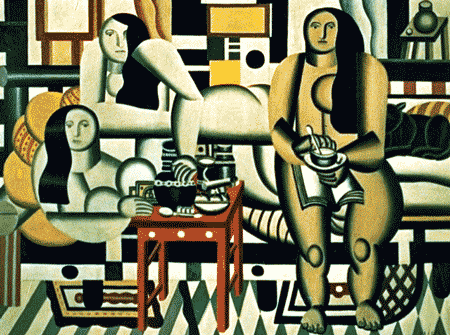Design Principle - Rhythm & Movement
Visual rhythms, like rhythms in music, are created by repeating elements in a regular beat or order. Several types of rhythms are commonly used in visual art.
 |
Visual rhythms can be very simple, as in a regular one-beat rhythm. An example might be a series of identical circles repeated one after another. |
|
A progressive rhythm is built on regular changes in a repeated element. An example would be a series of squares, each slightly larger than the next. |
An alternating rhythm is like a regular series of visual changes - circle-square, circle-square, circle-square and so on. |
A flowing rhythm has a graceful path of repeated movements with no sudden changes. |
|
In a jazzy rhythm, the repeated elements are varied in complicated patterns and combined with unexpected elements. |
|
Not all of the visual movements in an artwork are rhythmic. Sometimes a work has a dominant path of movement that adds to a mood. The sense of movement may come from a tall, vertical form reaching upward. Sometimes there is a path of motion leading to a center of interest. Even the absence of motion can be expressed. For example, a quiet, still, calm feeling may come from the use of many horizontal lines or forms. |
Can you give examples of visual rhythms in nature, everyday life or dance? |
















